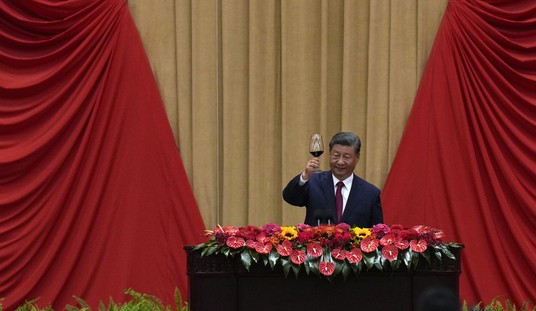Since we now live in the era of the Democrats’ Green New Deal, you can expect the subject of climate change to once again loom large in the upcoming Democratic debates. One key focus in this discussion will no doubt be the call to “keep it in the ground.” (“It” being fossil fuels.) So how will the green warriors make up for that loss of stable energy on the nation’s power grid? Hans Blix, writing at Time Magazine, issues a warning to the GND crowd this week that they probably won’t care for at all. If you want fewer fossil fuels being burned, be prepared to build a lot more nuclear power plants.
Nuclear power is virtually free of emissions. By contrast, we burn coal and gas at industrial scale to make electricity, pumping carbon dioxide and other noxious chemicals into our atmosphere. As a result, our oceans are warming and extreme climate events are becoming more common. Our children are more aware of these changes than we adults are: later this week, on March 15, young people will walk out of their schools in more than 30 countries to protest the scars we are carving into their futures.
There are paths out of this mess. But on March 11, 2011, the world’s course was diverted away from one of the most important. I am talking about nuclear energy.
Traditionally, green opposition to nuclear power has been rooted, above all, in fears of radiation let loose in a reactor accident or from waste leaking out of disposal sites. To use nuclear power and generate radioactive waste, environmentalists argued, was like taking off in an airplane without knowing where to land. However, today several countries are building deep underground disposal sites where they can safely land high level radioactive waste.
Blix may be full steam ahead in championing green solutions and a big believer in man-made global warming, but he’s spot on when it comes to nuclear power. Opponents of commercial nuclear reactors are still living in the scary world of Fukushima, Chernobyl, Three Mile Island, and the China Syndrome. All of those incidents raised valid concerns, but we learned a great deal from them as well. At Three Mile Island, the minimal escape of any radioactive material never brought exposure levels greater than you’d get spending the day at the airport in Denver. It was a huge mess to clean up (a process that continues to this day), but the causes were identified and led to safety improvements at other plants. We’ve never had another such incident on American soil in the 40 years since then.
Chernobyl was an epic disaster to be sure, but it was an epically bad plant design. The Russians had a system that risked mixing liquid sodium with water… an explosive combination of epic proportions. Their outer reactor shielding was a joke compared to American plants. It was a grand tour of “What Not To Do” when designing a plant.
Fukushima was literally hit by a tsunami. The plant design was solid, but it goes to show that you probably shouldn’t build your plants near the ocean if you live on top of the Ring of Fire. (And while we’re on the subject, California might want to take a second look at the idea of keeping nuclear plants built on top of the San Andreas Fault.)
The other concern Blix raises is how to dispose of spent nuclear fuel rods. That was originally a very thorny problem, but not so much anymore. As he notes in the article at Time, there are more and more deep-bedrock storage facilities coming online. At the same time, new reactor designs are giving us the ability to reuse much of the fuel in the spent rods, vastly reducing the amount of hazardous waste we have to deal with.
But if you want to take advantage of this technology to push your GND ideals, the industry can’t do it alone. There are so many government regulatory hurdles to overcome and vast investments of money (in the billions) involved in building a new plant that most companies simply won’t take the risk. New nuclear plant construction has effectively ground to a halt. The federal government needs to act as an honest broker in these negotiations, continuing to monitor for safety considerations, but not sustaining regulatory walls that prevent us from expanding our nuclear power output capacity.








Join the conversation as a VIP Member